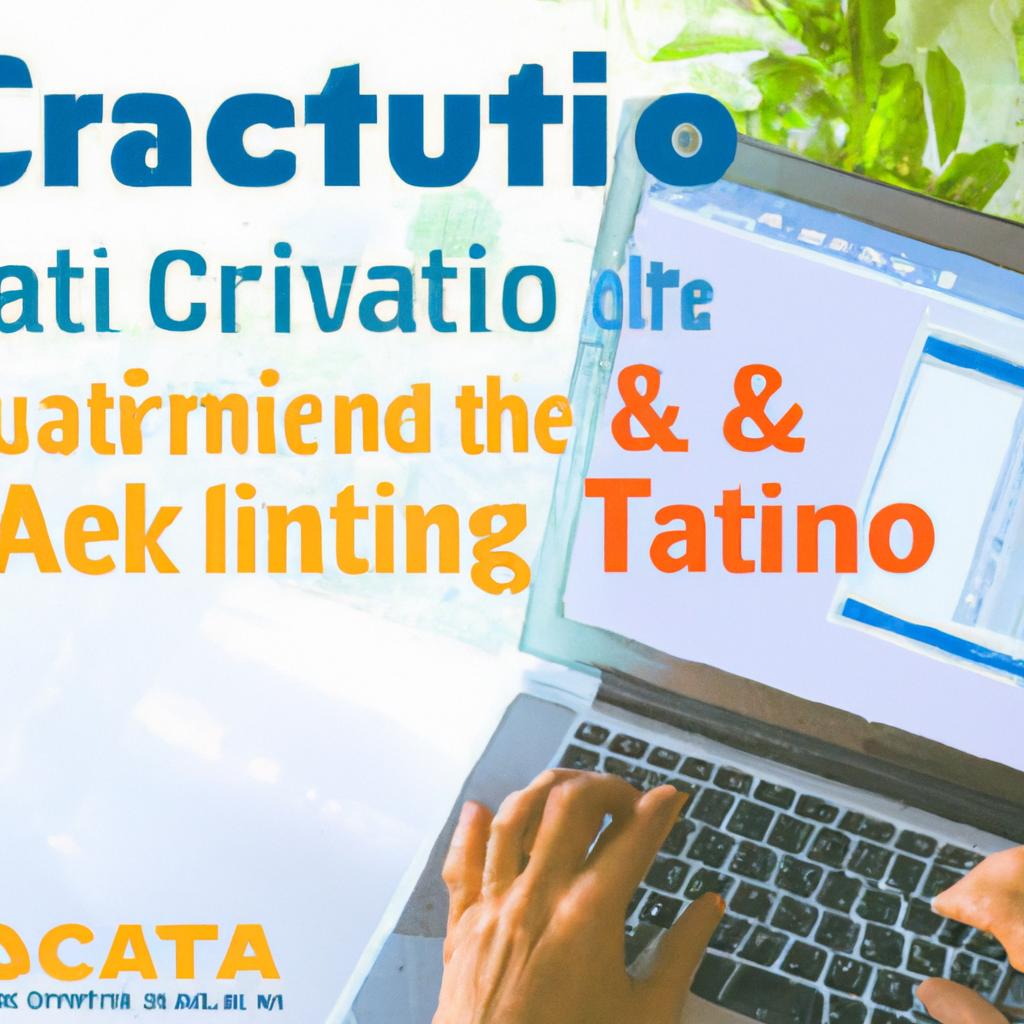
How to Create Effective CTAs (Call to Action)
In the digital realm where attention spans are fleeting and competition is fierce, the humble Call to Action (CTA) holds the key to compelling your audience to take the desired action. Whether it’s signing up for a newsletter, making a purchase, or booking a consultation, crafting effective CTAs is an art form that can make or break your online presence. In this article, we delve into the nuances of creating compelling CTAs that resonate with your audience and drive conversions.
Table of Contents
- Crafting Powerful CTAs that Drive Action
- Understanding the Psychology Behind Effective CTAs
- Design Tips to Enhance the Visibility of CTAs
- Best Practices for Testing and Optimizing Your CTAs
- Q&A
- The Conclusion
Crafting Powerful CTAs that Drive Action
One key element of creating effective CTAs is to make them visually appealing and attention-grabbing. Using bold colors, large fonts, and button designs can help your CTA stand out on a page. Consider using contrasting colors to make your CTA pop and draw the reader’s eye towards it. Additionally, incorporating compelling language and a sense of urgency can encourage users to take action.
Another important aspect of crafting powerful CTAs is to be clear and concise in your messaging. Avoid using vague language or complicated phrases that may confuse the reader. Instead, clearly state what action you want the user to take, whether it’s to sign up for a newsletter, make a purchase, or download a resource. Keep your CTA short and to the point, focusing on the benefit or value proposition that the user will receive by clicking on it. Remember, the goal is to make it as easy as possible for users to understand what you want them to do and why they should do it.
| Example | CTA |
|---|---|
| Sign up for a free trial | Start your free trial now! |
| Read more | Learn more today! |
Understanding the Psychology Behind Effective CTAs
When it comes to creating effective CTAs (Call to Action), psychology plays a major role in influencing user behavior. Understanding the psychological principles behind CTAs can help marketers craft compelling messages that drive action. Here are some key insights into the psychology behind effective CTAs:
- Creating a sense of urgency: By using words like “limited time offer” or “act now,” CTAs can tap into people’s fear of missing out, prompting them to take immediate action.
- Using power words: Words like “free,” “exclusive,” and “new” can trigger emotional responses in users, making them more likely to click on a CTA.
- Utilizing social proof: Including testimonials, reviews, or user statistics can build credibility and trust, making it easier for users to follow through on the CTA.
Design Tips to Enhance the Visibility of CTAs
One way to ensure the visibility of your CTAs is to use contrasting colors that stand out on the page. By choosing colors that pop against the background, you can easily draw the user’s attention to the call to action. Additionally, consider using bold fonts or larger text sizes to make the CTA message more prominent.
Another design tip to enhance the visibility of CTAs is to strategically place them on the page where they will be most effective. For example, placing the CTA near the top of the page or in a prominent location such as the center can help increase conversion rates. Utilize white space around the CTA to make it stand out even more, and consider adding visual elements such as arrows or icons to draw the user’s eye towards the call to action. By following these design tips, you can create effective CTAs that encourage users to take action on your website.
Best Practices for Testing and Optimizing Your CTAs
Testing and optimizing your CTAs is essential to maximizing their effectiveness and driving conversions on your website. One best practice is to conduct A/B testing to compare different versions of your CTAs and determine which one performs better. This can involve testing elements such as text, color, placement, and size to see what resonates most with your audience.
Another important practice is to analyze data and metrics to gain insights into the performance of your CTAs. By tracking metrics such as click-through rates, conversion rates, and engagement rates, you can identify patterns and trends that can help you make informed decisions about optimizing your CTAs. Additionally, user feedback can provide valuable insights into how your CTAs are perceived and what improvements can be made. By continuously testing, analyzing, and optimizing your CTAs, you can ensure that they are driving the desired actions from your audience.
Q&A
Q: Why are CTAs important in marketing?
A: CTAs are important in marketing because they prompt the audience to take a specific action, such as making a purchase or signing up for a newsletter.
Q: What are some key elements of an effective CTA?
A: Some key elements of an effective CTA include clear and concise language, a sense of urgency, and a strong call to action.
Q: How can I create a compelling CTA for my website?
A: To create a compelling CTA for your website, focus on using persuasive language, strategic placement, and eye-catching design to engage your audience.
Q: How can I measure the success of my CTAs?
A: You can measure the success of your CTAs by tracking metrics such as click-through rates, conversion rates, and overall engagement to see how well they are performing.
Q: What are some common mistakes to avoid when creating CTAs?
A: Some common mistakes to avoid when creating CTAs include using vague language, overwhelming the audience with too many CTAs, and not testing different variations to see what works best.
The Conclusion
In conclusion, mastering the art of creating effective CTAs is crucial for driving conversions and guiding your audience towards the desired action. By implementing the tips and strategies discussed in this article, you can elevate your call to action game and enhance the overall effectiveness of your marketing campaigns. Remember, a well-crafted CTA has the power to captivate and compel, so don’t underestimate its importance in your content creation efforts. Cheers to creating compelling CTAs that inspire action and lead to success!


